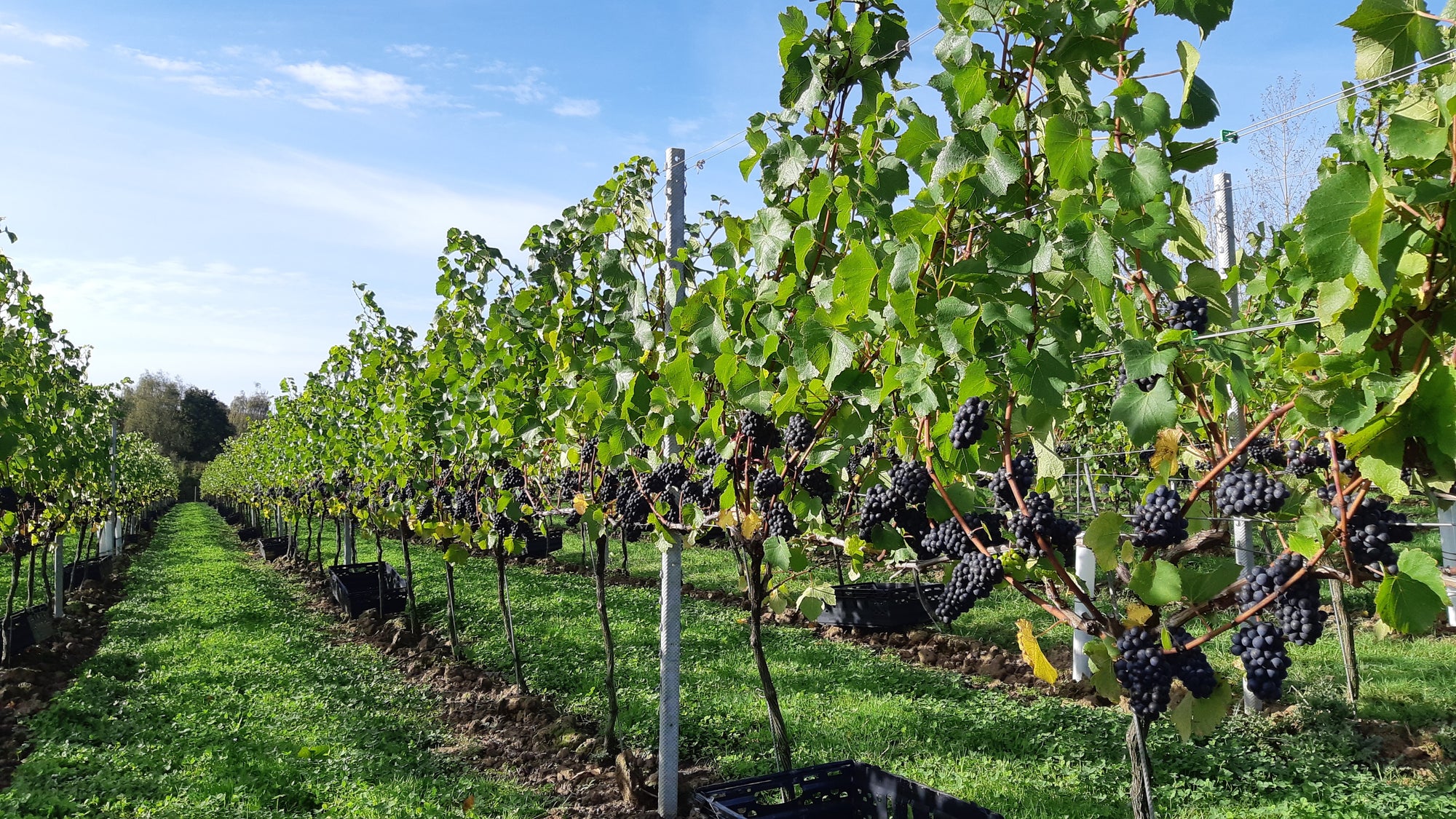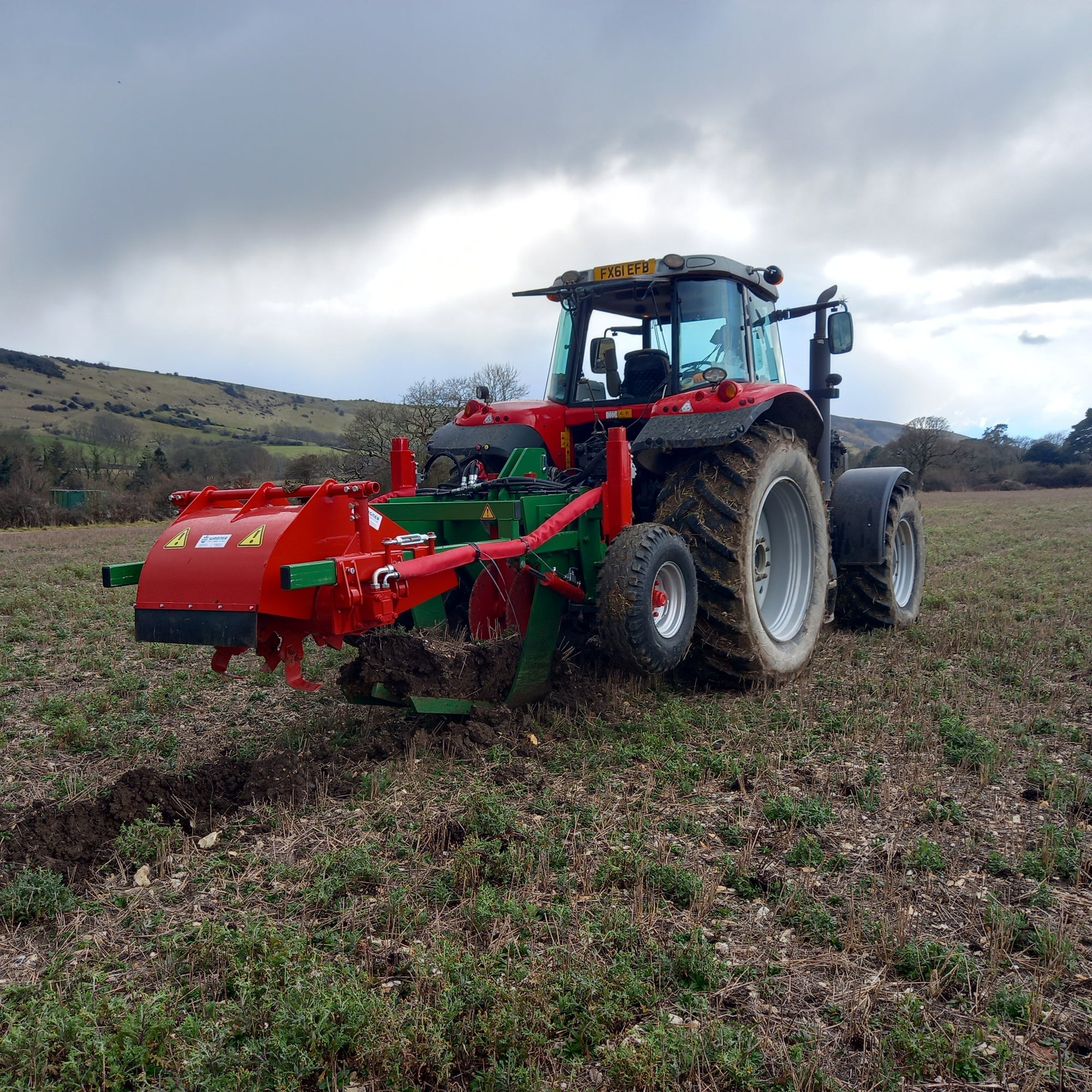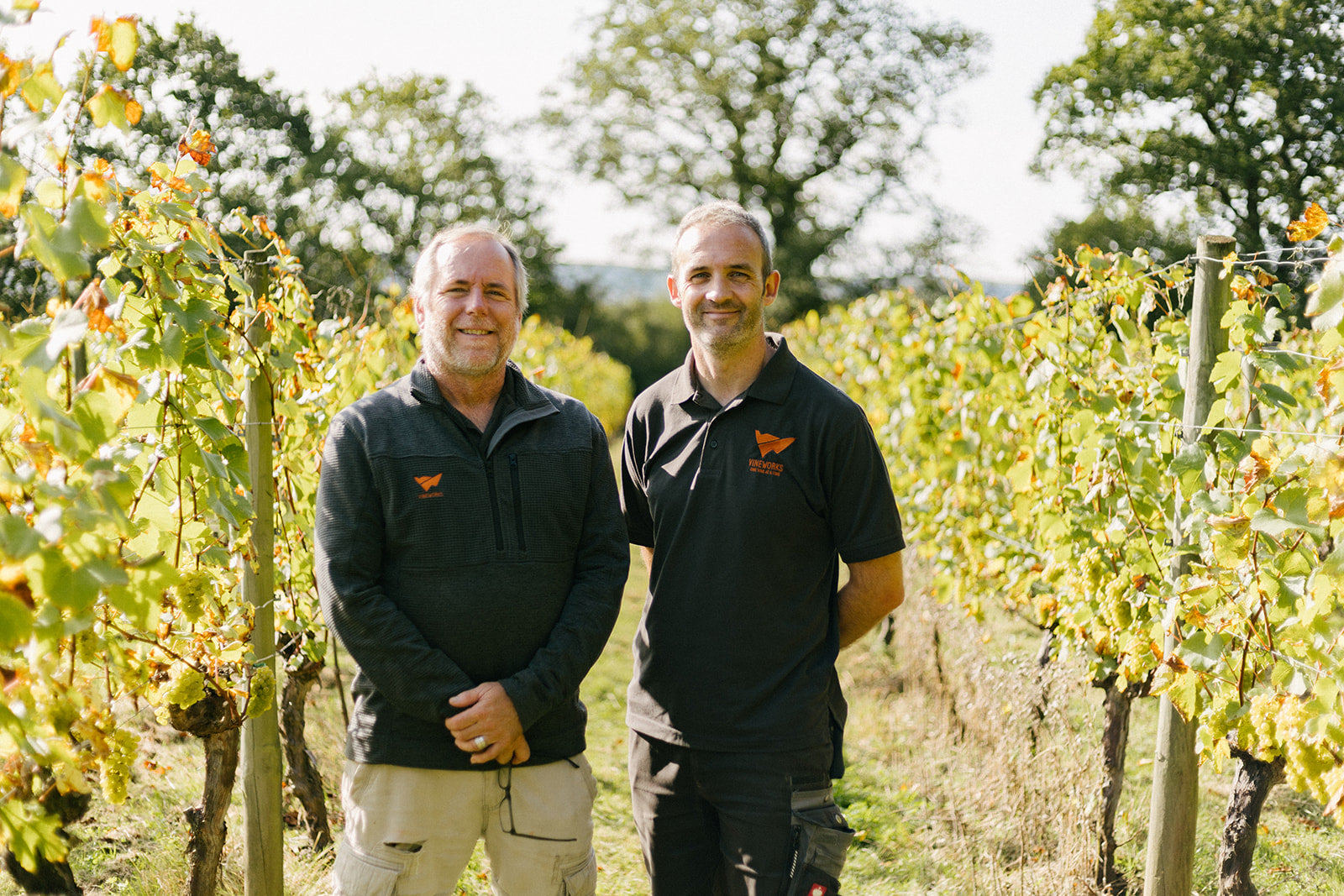

Choosing the Right Trellis System for your Vineyard
The Vertical Shoot Positioning (VSP) trellis is one of the most common vine training systems in the UK and around the world. It involves training the vine shoots upwards in a narrow, vertical curtain above uni or bi lateral cordons or canes.
VSP trellises are commonly used in cool areas, where the risk of fungal disease is high, unlike in warmer, drier climates where vines may be bush or basket trained. A VSP system keeps the vine foliage away from the soil and in a position that will improve the efficiency of spraying. In addition to this, the upright shoots will create a large expanse of leaves that are well exposed to sunlight, enhancing their photosynthetic abilities. This system is particularly suited to a climate with marginal heat and sunlight as it maintains apical dominance of the upward oriented shoot tips, which intensifies their vigour and increases the likelihood of reaching a full canopy. In a VSP system the fruit at the base of the shoot tends to be pushed outside of the canopy, further increasing their exposure to sunlight and thus enhancing their ripening. It also increases wind movement within the row and the effectiveness of spraying and other mechanical operations.
One of the main reasons the VSP system is so commonly used around the world is due to its adaptability in its set up to different conditions and desired outcomes of a vineyard. This can be done by adapting its height, wire configuration and materials used.
Matching the method with the site
In the UK, a VSP is typically set up with a single fruiting wire at 90-95cm off the ground with a canopy of 90-110cm. In other regions, like in Piedmont (Italy), the fruiting wire is typically at 55-60cm with a canopy of 140-145cm. In Champagne (France), the fruiting wire is at 20-30cm with a canopy of 100-110cm, while in California (USA) the fruiting wire is at 100-110cm with a canopy of 90-100cm.
The planting density, soil, grape variety, yield expectations, vineyard machinery and labour available to operate the vineyard, and regional regulations will all influence decision-making around how to set up the VSP, however the climatic conditions are possibly the most determinant and over-arching factor.
A recent study has shown clear differences in temperature at different heights of a VSP trellis system. By raising the fruiting wire from 45cm to 95cm the maximum temperature during the day time could be reduced by 0.4 to 0.6°C and the minimum temperature during frost nights could be increased by 0.2 to 0.5 °C. This offers positive possibilities for both warm and cool climates, where heat waves, frost pressure and balanced ripeness could be an issue. This change in temperature is further influenced by the soil management as there would be differences in gradients depending on whether the soil has been tilled or is covered by a cover crop, as the latter will prevent heat radiation from the soil. (Rességuier et al., 2023).
In a cool climate, it may make sense to take advantage of the additional warmth closer to the soil. The trade-off might be an additional frost and disease pressure. Another study found that a difference in trellis height from 75cm to 150cm can result in a 1°C difference (Pocock and Lipman, 2002).
A change in the fruiting wire will also influence the size of the vine’s canopy. This is an important consideration too, as an adequate canopy is required to potentially reach desired ripeness. This will again be determined by climatic conditions and grape varieties used. Typically a 0.8 to 1.2m² leaf area per Kg of fruit is needed, however in cooler climates like in the UK, 2m² leaf area per Kg is more suitable for optimal ripeness.
As previously mentioned, the VSP can easily be adapted to different conditions. For example, in the UK, it is commonly set up with one fruiting wire allowing the vines to be trained with a double Cordon or Guyot. However, the generally high vigour and the difficulties around fruit-set may make growers want to consider adding an additional fruiting wire onto an already established VSP to train the vines in a ‘Pendelbogen’ or ‘European loop’ system which has more fruit bearing shoots therefore providing higher yields and better sap distribution, which will help production, keeping in mind the desired ripeness.
When choosing a configuration of a VSP system, there are many factors to consider, one like the fruiting wire height could be critical. As with most things in viticulture however, finding the right balance is key.
That is why at VineWorks we work to achieve the best outcome for our customers ONE VINE AT A TIME.
If you want to learn more about VSP trellising, read:
-
Pocock, D., Lipman , A., 2002, “Frost Damage Control and Prevention -Fruit and Vines” Primary Industries and Resources SA Fact sheet p 1-3.
-
De Rességuier, L., Pieri, P., Petitjean, T., Mary, S., van Leeuwen, C. 2023 “Temperature variation linked to trellis height:an opportunity for adaptation to climate change?” Oeno one.
PUBLISHED IN VINEYARD MAGAZINE - DECEMBER 2023
Photo credit VineWorks, 2022



